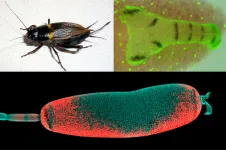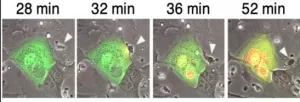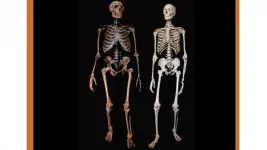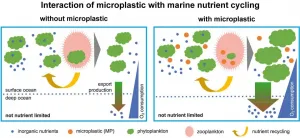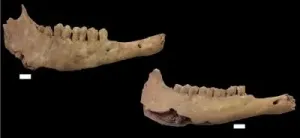(Press-News.org) Women at high risk of breast cancer face cost-associated barriers to care even when they have health insurance, a new study has found.
The findings suggest the need for more transparency in pricing of health care and policies to eliminate financial obstacles to catching cancer early.
The study led by researchers at The Ohio State University included in-depth interviews with 50 women - 30 white, 20 Black - deemed at high risk of breast cancer based on family history and other factors. It appears in the Journal of Genetic Counseling.
The researchers considered it a given that women without any insurance would face serious barriers to preventive care including genetic counseling and testing, prophylactic mastectomy and advanced breast imaging.
But they wanted to better understand the nuances - how finances played into decision-making in other ways and for women who had insurance.
"Financial barriers seem to regularly impede access to critical information that high-risk women can only get through genetic counseling and testing, and keep them from using regular screenings that could catch cancers in the earliest and most treatable stages," said co-lead author Tasleem Padamsee, assistant professor of health services management and policy at Ohio State.
"For women at the highest levels of risk, financial impediments can also put the most effective preventive surgeries and medications entirely out of reach," said Padamsee, who is also part of Ohio State's Comprehensive Cancer Center.
The study provided several new insights about barriers to care, including:
Financial constraints not only affect the health care and preventive choices of low-income women or uninsured women. Across the financial spectrum, women reported worrying about the financial impacts of prevention choices and avoiding taking steps they can't afford or don't know if they can afford.
When women decide whether or not they can afford a procedure or test, they aren't just considering the expense of that specific care - they are balancing these costs with other financial demands they face, from medical debt to child care to other illnesses they may be paying to treat for themselves or a family member. Competing demands play a unique role in cancer prevention care, the authors said.
Financial considerations are influenced by more than the financial realities of women's lives. They are also influenced by broader social and political issues such as lack of price transparency on the part of insurance companies, which often results in women having to guess which services are covered and which are not.
"Underinsurance was a really big factor - even for those women who have private insurance, they come across a lot of hurdles with requesting coverage for genetic testing, counseling, risk-reducing surgeries and enhanced breast screening," said study co-lead author Rachel J. Meadows, who worked on the research as a doctoral student at Ohio State's College of Public Health.
"These women are managing other priorities, including weighing paying for care for chronic diseases they currently have against managing a future risk. And they have other financial demands, including raising children and supporting other family members," said Meadows, who currently works at the Center for Outcomes Research at the JPS Health Network in Fort Worth, Texas.
Many high-risk women also worry about the risk of future discrimination if they have genetic testing, she said, although current law prevents genetic discrimination.
Often, studies simply look at the association of income and insurance status with use of health care services, but this work's detailed conversations with women can help advocates, providers and others better understand the subtleties of decision-making, the researchers said.
"All this information is critical to our ability to improve care. Knowing that a wide range of high-risk women are affected by financial constraints suggests that they might be better served by providers who are trained and ready to share information about insurance coverage, costs and financial assistance programs alongside information about potentially helpful tests and procedures," Padamsee said.
The findings from the study also suggest a need for regulatory changes such as long-term guarantees against genetic discrimination and stronger requirements that insurance companies disclose their full benefits and co-pays in more transparent and comprehensible ways, she said.
"These changes could improve women's ability to access high-risk care, reduce the number and severity of future cancers, and avoid future cancer treatment costs for both patients and payers."
Another new study involving the same group of women found that 45% of participants - and only 21% of Black participants - were aware of their options for taking medications to reduce their risk of developing breast cancer. Women were more likely to have heard of these drugs, usually tamoxifen or raloxifene, if they had access to care from a specialist. The study appears in the journal BMC Women's Health.
"Lack of chemoprevention awareness is a critical gap in women's ability to make health-protective choices," Padamsee said.
INFORMATION:
Other authors on the second study are Megan Hils and Anna Muraveva.
The research was supported by the National Cancer Institute.
CONTACTS: Tasleem J. Padamsee, Padamsee.1@osu.edu; Rachel J. Meadows, rmeadows@jpshealth.org
OAK BROOK, Ill. - An artificial intelligence-driven system that automatically combs through brain MRIs for abnormalities could speed care to those who need it most, according to a study published in Radiology: Artificial Intelligence.
MRI produces detailed images of the brain that help radiologists diagnose various diseases and damage from events like a stroke or head injury. Its increasing use has led to an image overload that presents an urgent need for improved radiologic workflow. Automatic identification of abnormal findings in medical images offers a potential solution, enabling improved patient care and accelerated patient discharge.
"There are an increasing number of MRIs that are performed, ...
Certain signalling proteins, which are responsible for the development of innate immune function in almost all animals are also required for the formation of the dorsal-ventral (back-belly) axis in insect embryos. A new study by researchers from the University of Cologne's Institute of Zoology suggests that the relevance of these signalling proteins for insect axis formation has increased independently several times during evolution. For example, the research team found similar evolutionary patterns in the Mediterranean field cricket as in the fruit fly Drosophila, although the two insects are only very distantly related and previous observations suggested different evolutionary ...
Metaplasia is defined as the replacement of a fully differentiated cell type by another. There are several classical examples of metaplasia, one of the most frequent is called Barrett's oesophagus. Barrett's oesophagus is characterized by the replacement of the keratinocytes by columnar cells in the lower oesophagus upon chronic acid reflux. This metaplasia is considered a precancerous lesion that increases by around 50 times the risk of this oesophageal adenocarcinoma. Nonetheless, the mechanisms involved in the development of metaplasia in the oesophagus are still partially unknown.
In a new study published in Cell Stem Cell, researchers led by Mr. Benjamin Beck, ...
Drawing on epidemiological field studies and the FrenchCOVID hospital cohort coordinated by Inserm, teams from the Institut Pasteur, the CNRS and the Vaccine Research Institute (VRI, Inserm/University Paris-Est Créteil) studied the antibodies induced in individuals with asymptomatic or symptomatic SARS-CoV-2 infection. The scientists demonstrated that infection induces polyfunctional antibodies. Beyond neutralization, these antibodies can activate NK (natural killer) cells or the complement system, leading to the destruction of infected cells. Antibody levels are slightly lower in asymptomatic ...
Creativity--the "secret weapon" of Homo sapiens--constituted a major advantage over Neanderthals and played an important role in the survival of the human species. This is the finding of an international team of scientists, led by the University of Granada (UGR), which has identified for the first time a series of 267 genes linked to creativity that differentiate Homo sapiens from Neanderthals.
This important scientific finding, published today in the prestigious journal Molecular Psychiatry (Nature), suggests that it was these genetic differences linked to creativity that enabled Homo sapiens to eventually replace Neanderthals. It was creativity that gave Homo sapiens the ...
Children with weakened immune systems have not shown a higher risk of developing severe COVID-19 infection despite commonly displaying symptoms, a new study suggests.
During a 16-week period which covered the first wave of the pandemic, researchers from Southampton carried out an observational study of nearly 1500 immunocompromised children - defined as requiring annual influenza vaccinations due to underlying conditions or medication. The children, their parents or guardians completed weekly questionnaires to provide information about any symptoms they had experienced, COVID-19 test results and the impact of the pandemic on their daily life.
The results, published in BMJ Open, showed that symptoms of COVID-19 infection were common in many of the children - with ...
The effects of the steadily increasing amount of plastic in the ocean are complex and not yet fully understood. Scientists at GEOMAR Helmholtz Centre for Ocean Research Kiel have now shown for the first time that the uptake of microplastics by zooplankton can have significant effects on the marine ecosystem even at low concentrations. The study, published in the international journal Nature Communications, further indicates that the resulting changes may be responsible for a loss of oxygen in the ocean beyond that caused by global warming.
Plastic debris in the ocean is a widely known problem for large marine mammals, fish and seabirds. These ...
The results, exceptional first time evidence of how early flocks of domesticated sheep fed and reproduced within the Iberian Peninsula, are currently the first example of the modification of sheep's seasonal reproductive rhythms with the aim of adapting them to human needs.
The project includes technical approaches based on stable isotope analysis and dental microwear of animal remains from more than 7,500 years ago found in the Neolithic Chaves cave site in Huesca, in the central Pyrennean region of Spain. The research was coordinated from the Arqueozoology Laboratory of the UAB Department of Antiquity, with the participation of researchers from the University of Zaragoza, the Museum of Natural History of Paris, and the Catalan Institute of Human Palaeocology and Social Evolution (IPHES) ...
Most battery materials, novel catalysts, and storage materials for hydrogen have one thing in common: they have a structure comprised of tiny pores in the nanometer range. These pores provide space which can be occupied by guest atoms, ions, and molecules. As a consequence, the properties of the guest and the host can change dramatically. Understanding the processes inside the pores is crucial to develop innovative energy technologies.
Observing the filling process
So far, it has only been possible to characterise the pore structure of the substrate materials precisely. The exact structure of the adsorbate inside the pores has remained hidden. To probe this, a team from the HZB together with colleagues ...
The natural menopause occurs when the menstrual periods cease due to the naturally decreased ovary function. There is a significant interindividual variation in the age at natural menopause but, on average, women undergo it around the age of 51 in Western countries. Furthermore, the length of the preceding menopausal transition, characterized by irregular menstrual cycles and menopausal symptoms, is also known to vary between individuals.
The study revealed that higher estradiol and follicle-stimulating hormone levels, irregular menstrual cycles, and menopausal symptoms are strong indicators of approaching menopause in middle-aged women. Additionally, information related ...

